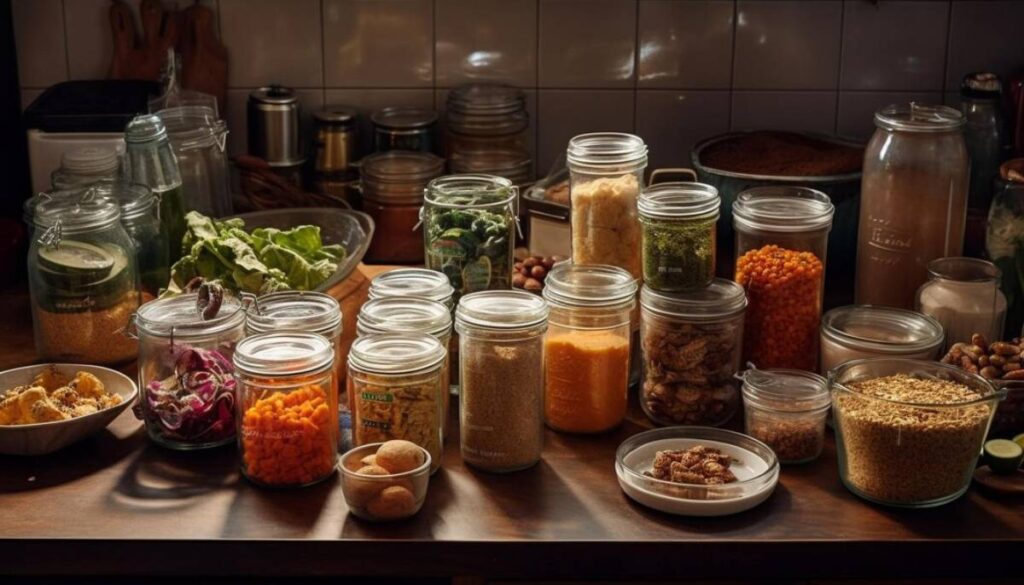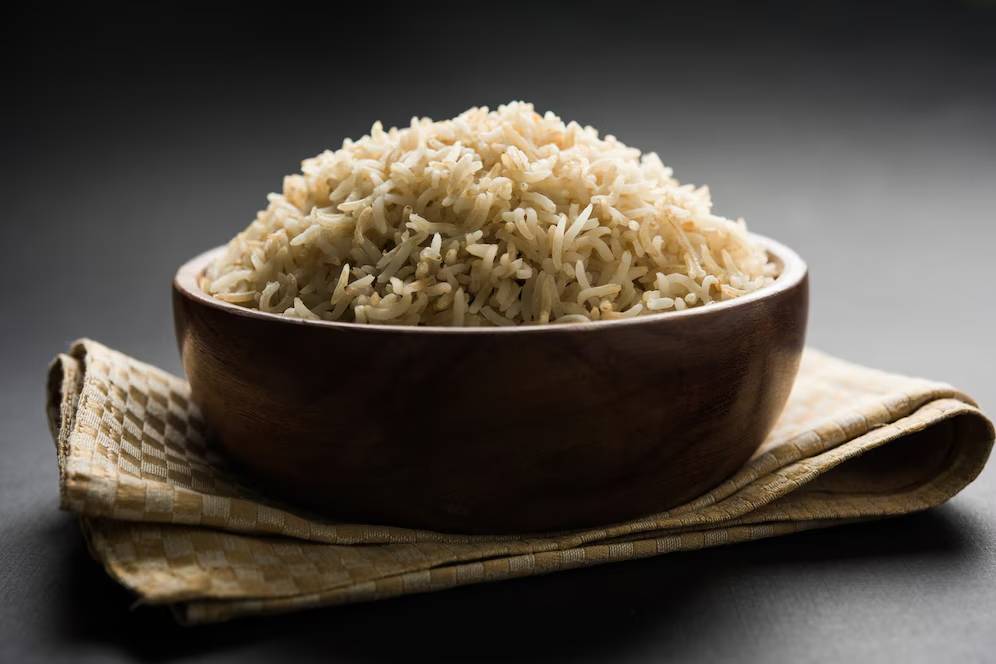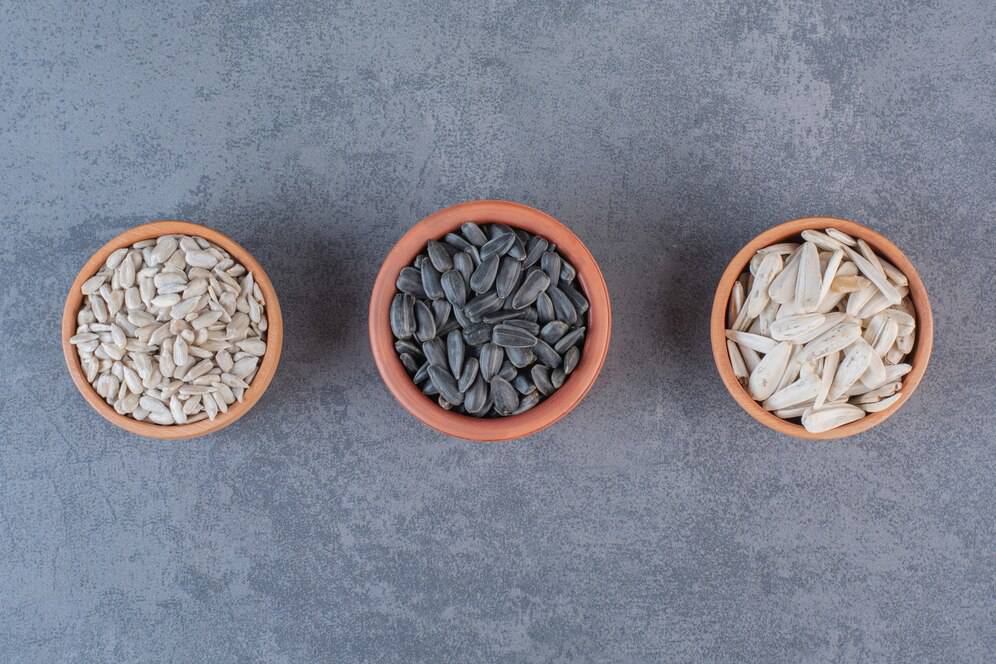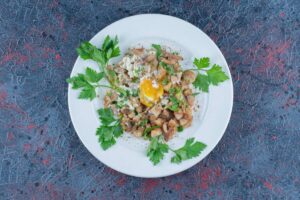The Food & Recipes Blog

How to Stock a Pantry for Quick Healthy Dinners
When life gets hectic, your pantry becomes your greatest ally in the kitchen.
Our team has explored how the right pantry staples can make quick dinner essentials feel effortless, even on your busiest evenings. Whether you’re crafting a simple stir-fry, building a hearty soup, or pulling together a grain bowl in record time, a well-stocked pantry lets you cook creatively without starting from scratch each time.
This guide walks you through exactly how to stock your pantry with healthy pantry items so you always have the tools to create nourishing, satisfying meals in under 30 minutes, without the need for a last-minute shop.
Pro Tip:
A healthy pantry isn’t packed—it’s purposeful. Choose items that are versatile, long-lasting, and actually suit the meals you enjoy making.
Quick Guide: Pantry Prep for Healthy Weeknight Meals
- Stock a mix of shelf-stable proteins, grains, veg, and flavour boosters.
- Group items by function: base ingredients, enhancers, and finishing touches.
- Rotate items monthly to keep your pantry fresh and reduce waste.
Important:
Pantry staples should complement—not replace—your fresh ingredients. When used together, they form the backbone of fast, well-rounded meals.
Step-by-Step Guide to Stocking a Pantry for Quick Healthy Dinners
Step 1: Choose Core Grains and Carbohydrate Bases

Whole grains are the foundation of many quick dinners. Look for varieties that are easy to store and fast to prepare.
Healthy Pantry Grains:
- Brown rice and basmati rice (microwaveable packs for speed)
- Quinoa, bulgur wheat, and couscous
- Rolled oats (for savoury porridge or breakfast-for-dinner options)
- Wholewheat pasta and lentil-based pasta
- Wholegrain wraps, flatbreads, or shelf-stable naan
Tip: Store grains in clear jars with labels for quick visibility and airtight freshness.
Step 2: Include Tinned and Jarred Proteins
Protein is essential for satiety and structure in every meal. Tinned and jarred options offer convenience without compromising nutrition.
Best Shelf-Stable Protein Sources:
- Tinned lentils, black beans, kidney beans, and chickpeas
- Tinned tuna, salmon, sardines, and mackerel (in water or olive oil)
- Tofu in vacuum-sealed packs or shelf-stable tempeh
- Jared grilled chicken or bean-based pasta sauces
- Nut butters (peanut, almond, cashew) and seed spreads
Pro Tip: Keep a few different protein sources on hand to switch up meals and ensure variety.
Step 3: Stock Shelf-Stable Vegetables and Fruit
Canned, dried, or jarred veg and fruit help round out a meal when fresh produce runs low.
Veg and Fruit Essentials:
- Tinned tomatoes (diced, whole, or crushed)
- Tomato passata or tomato purée
- Jarred roasted peppers, olives, or artichokes
- Tinned sweetcorn and green beans
- Dried mushrooms or sun-dried tomatoes
- Tinned pineapple or peaches in juice (great in stir-fries or curries)
Tip: Opt for no added salt or sugar when possible.
Step 4: Add Sauces, Spices, and Flavour Bases
Flavour matters—especially when you’re cooking quickly. Stock your shelves with go-to sauces and dried seasonings that work across multiple cuisines.
Flavour-Boosting Pantry Staples:
- Olive oil, sesame oil, and rapeseed oil
- Soy sauce, tamari, or coconut aminos
- Jarred pesto, curry paste, or harissa
- Balsamic vinegar, apple cider vinegar, rice vinegar
- Garlic and onion powder, smoked paprika, cumin, turmeric
- Dried herbs (oregano, basil, thyme, rosemary)
- Bouillon cubes or liquid stock concentrates
Pro Tip: Make your own quick vinaigrette with oil, vinegar, mustard, and herbs for salads or drizzling over warm bowls.
Step 5: Include Quick-Cooking Meal Builders
These items help bridge the gap between ingredients and a complete dish.
Fast Pantry Meal Makers:
- Tinned soups or lentil stews (look for high-protein, low-sodium options)
- Instant miso soup or pho noodle bowls (lower-sodium versions)
- Quick-cook noodles (rice noodles, soba, wholewheat)
- Microwave grain packs
- Ready-made curry or pasta sauces (check the label for added sugars and salt)
Tip: Combine these with leftover meat, tofu, or roasted veg for an instant upgrade.
Step 6: Stock Healthy Add-Ons and Finishing Touches
The little extras make a meal feel complete. Add texture, crunch, and richness with nutritious toppings and condiments.
Great Pantry Additions:

- Pumpkin seeds, sunflower seeds, and chia seeds
- Mixed nuts (lightly salted or unsalted)
- Jarred salsa or guacamole
- Nutritional yeast
- Sriracha, hot sauce, or tahini
- Dark chocolate or cocoa powder (for sweet cravings or sauces)
Tip: Use seeds and nuts to garnish everything from soups to grain bowls and salads for extra protein and crunch.
Step 7: Organise Your Pantry for Speed
A stocked pantry only helps if you can actually find what you need.
Organisation Tips:
- Use baskets or bins to group items (e.g. grains, legumes, sauces)
- Place older items at the front so they’re used first
- Label containers with cooking times or expiry dates
- Consider magnetic spice racks or stackable jars to save space
- Create a “meal starters” zone with grab-and-go items like wraps and sauces
A well-ordered pantry reduces prep time and inspires more confident, creative cooking.
Tools to Help Maintain a Healthy Pantry
- Glass jars with airtight lids: Store grains, legumes, and flours
- Stackable bins or baskets: Keep categories visible and easy to access
- Label maker or chalkboard labels: Track expiry dates and contents
- Over-the-door organisers: Perfect for spices, sauces, or snacks
- Weekly pantry check-list: Stay on top of inventory and reduce overbuying
Frequently Asked Questions (FAQs)

1. How often should I refresh my pantry?
Do a quick check once a month to rotate stock, use items nearing expiry, and wipe down shelves. Refill every 6–8 weeks based on your cooking habits.
2. Can I make balanced meals using only pantry items?
Yes, particularly when combined thoughtfully. Use a grain + protein + veg (tinned or dried) + seasoning to build complete, satisfying meals.
3. How do I make sure my pantry stays healthy?
Focus on whole foods with minimal additives. Avoid heavily processed snacks and sauces high in added sugars, saturated fats, and sodium.
4. Are tinned and jarred foods as nutritious as fresh?
Often, yes. Tinned beans, tomatoes, and fish retain most of their nutrients. Just check for unnecessary added salt or sugar and rinse when needed.
5. What should I avoid stocking in a health-focused pantry?
Highly processed instant meals, sugary cereals, cream-based sauces, or anything with long lists of unrecognisable ingredients. Stick to simple, whole-food staples.
Final Word: A Pantry That Works as Hard as You Do
The right pantry setup makes healthy eating simple, sustainable, and surprisingly creative. With carefully selected pantry staples, you’ll always have the tools to create quick dinner essentials on your terms—whether you’re improvising after a long day or batch cooking on the weekend.
The beauty of a well-stocked pantry isn’t just convenience—it’s the confidence to walk into your kitchen and know dinner’s already halfway made. With these healthy pantry items in place, you’ll spend less time stressing and more time enjoying what’s on your plate.









